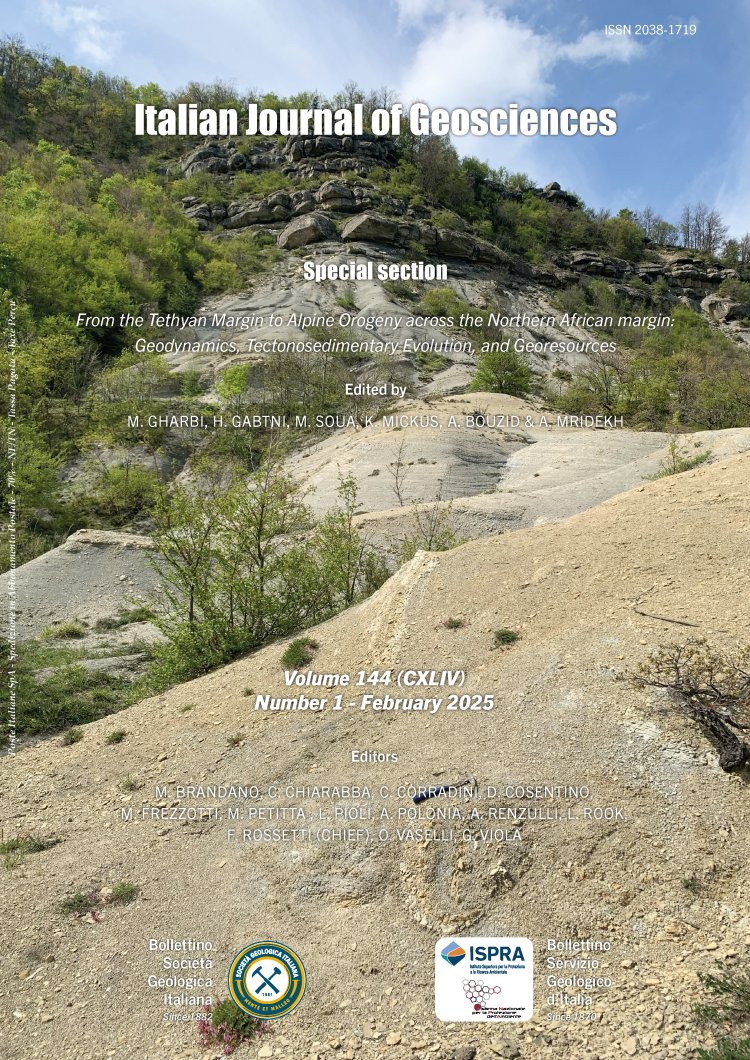
Fractionation of the major, trace, and rare Earth elements of the NE Gondwana Fortunian Salab Formation of Jordan controlled by provenance, chemical weathering, and hydraulic sorting
Belal S. Amireh1, Wadah F. Mahmoud1, Ghazi A. Saffarini1 & Ghaleb H. Jarrar1
1Department of Geology, University of Jordan, Amman, 11942, Jordan.
Corresponding author e-mail: bamireh@ju.edu.jo
Volume: 144 (2025) f.1
Pages: 93-120
Abstract
The present bulk-rock geochemical study aims at elucidating the factors influencing the fractionation of the major elements, trace elements, and rare Earth elements (REEs) in the lower Paleozoic sandstones of the NE Gondwana Fortunian Salab Formation of Jordan. The investigation employed optical microscopy, granulometric analyses, SEM (EDS), XRD, ICP-MS, and ICP-AES techniques. The major elements, trace elements, and REEs contents of the Salab sandstones were primarily controlled by the Arabian-Nubian Shield (ANS) provenance. The ANS source rocks consisted of Ediacaran volcanic arc granitoids formed linked to the Pan African Orogeny. A major felsic composition of the ANS source rocks was constrained through high abundances of Hf, Ba, Rb, Th, Zr, SiO2, high Th/Sc, Al2O3/TiO2, Ba/Sr, Y/Ni, ΣLREEs/ΣHREEs ratios, low abundances of Cr, Ni, Zn, Cu, Sc, TiO2, and low Cr/Th, Ce/Th, Ti/Lax20, Ti/Zr ratios. Furthermore, this inference was confirmed by the V-Ni-Thx10 ternary plot and the following provenance bivariant discriminant Sc vs. Th, Cr/Th vs. Th/Sc, Zr/Sc vs. Th/Sc, and Th vs. La plots. A minor contribution of mafic source rocks was registered by the petrographic observations. The Salab source rocks were subjected to an exhaustive chemical weathering prevailing under a hot humid climate during the Fortunian Age. It was inferred from a low WIP (weathering index of Parker) value, a high CIW (chemical index of weathering)
value, and a low abundance of ΣLREEs, as well as depletion of most major, trace, and rare Earth elements, compared to the upper continental crust (UCC). The hydraulic sorting was responsible for the fractionation of the heavy minerals in the fine and very fine sand fractions of the Salab sandstones and, consequently, of the Zr, Hf, Ti, Th, and REEs enrichment, together with the fractionation of the detrital feldspar and quartz in the coarser Salab sandstones, with selective enrichment of Si, Al, K, Na, Ca, Ba, Rb, and Cs. An event of a very low-grade metamorphism (zeolite facies), associated with a low-temperature hydrothermal metasomatism affected Jordan
at the beginning of the Fortunian time, and was responsible for neoformation of illite, anatase, and apatite. The present study highlights the significance of integrating petrographic and granulometric studies with the bulk-rock geochemistry in unraveling the provenance and the paleoweathering when investigating other siliciclastics in similar geologic-tectonic environments.
Keywords
Bulk-rock geochemistry, elemental fractionation, provenance, major/trace/rare Earth elements, chemical weathering, Jordan, Gondwana.
Get Full Text Supplementary Material